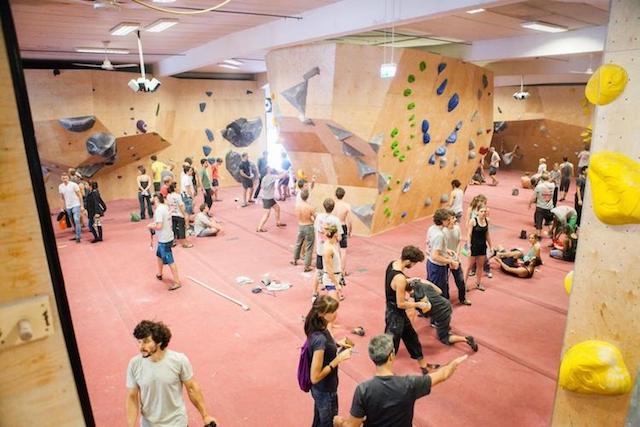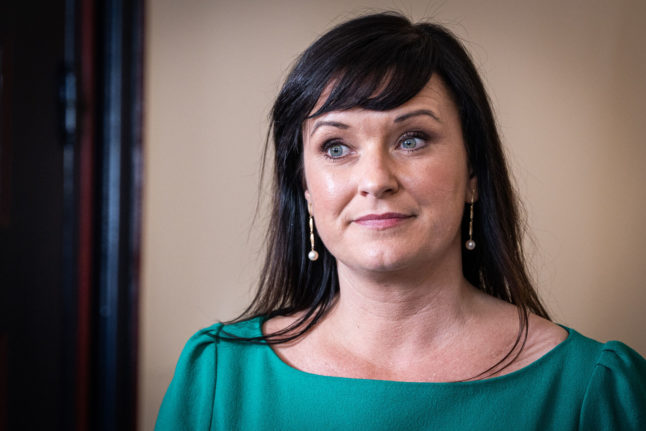*This content is an advertisement. It was not produced by The Local's journalists.
Visit your local yoga studio, go swimming, bouldering, have a gym session, take a dance class or make new friends in Urban Sports Club's team sport communities. All of this in one membership at a fixed cost that you can cancel at just one month's notice.
In the Urban Sport of the Week series, a member of the USC team tries a different sport to encourage members to do the same – because new sports lead to new hobbies and new friends.
This week, USC's fitness fan tried out bouldering, the trendy new sport that everyone’s talking about…
What is bouldering?
Bouldering is like rock-climbing but without a rope (and with the added security of a padded floor). The walls are usually no more than five metres high and there are many different routes or ‘problems’ which vary in difficulty. You can boulder indoors or outdoors but the sport is most often practiced indoors.
Boulderklub Kreuzberg was founded in 2015 by Robert Ramirez and Erik Stöpel, two friends who have been long-standing members of the Berlin bouldering community. The location is unbeatable – right in the heart of Kreuzberg by the Landwehr Canal.
Sign up to Urban Sports Club today – get fit, discover new hobbies and make new friends.
What can you expect?
It’s easy to miss Boulderklub Kreuzberg as it’s tucked away from the road between a coffee shop and a physiotherapist. As I entered, the spacious warehouse opened up into a cafe area where people were chatting and drinking coffee as house tunes played over the speakers.
A friendly staff member checked us in (I brought a bouldering buddy along with me) and gave us a bag of chalk and shoes which felt about three sizes too small. We were reassured this is so that our toes could grip easier. I remember thinking that I’d never had to use my toes to grip anything before!
As we made our way to the changing room I spotted the climbing walls, each with different-coloured holds or grips. I glimpsed wiry climbers scaling the walls at insane angles. Last week I failed at climbing a ladder in a bar in Berlin so, to be honest, I didn’t have high hopes for my bouldering abilities.
 Photo: Boulderklub Kreuzberg
Photo: Boulderklub Kreuzberg
How was the workout?
We warmed up with some light shoulder stretches and hip opening exercises. Boulderklub Kreuzberg offers a beginners course but after some research I decided to dive straight in – it looked relatively simple and there were lots of online resources full of tips for beginners.
The various routes on the walls were marked with different coloured tags that told us the level. They go from green (easy) to red (hard). The level of difficulty also varies according to whether the wall itself is at an incline. Some of the ‘easy’ routes were on overhangs almost parallel to the ground which made it, ya know, not so easy.
We started on a green route at a slight incline. On the way up you can only use the green holds, but on the way down you can use any hold you like. The route itself was easy, but when I reached the top, I remembered I’m not a big fan of heights. I tried not to look down as I clambered inelegantly back to safety.
I really enjoyed the social aspect of bouldering. As my friend and I tried more challenging routes we were constantly communicating to help each other out. Other boulderers (perhaps sensing we were new) helped us by giving advice and tips on technique. Everyone was very open and friendly and I could sense the community of the sport.
Soon we felt confident enough to tackle some of the overhang routes. This was when the real workout kicked in. I had to use my entire body, fingers, toes, arms, legs, core to keep my balance as I climbed. On top of this I needed to use my logic to find the best route. After about an hour I felt like I’d given my brain a workout as well as my body and felt a real sense of achievement.
Sign up to Urban Sports Club today – get fit, discover new hobbies and make new friends.
How did I feel after?
I felt mentally exhilarated and totally de-stressed — I hadn’t spent any time thinking about everyday worries as my brain had been busy climbing walls. I also felt physically exhausted. I’d had to use my entire body to keep my balance and pull myself up. The following days my arms bore the brunt of the workout and I was proud to find tiny blisters on the palms of my hands – just like a real climber.
Health benefits of bouldering
It truly is a full-body workout, from your fingers to your toes, and you use core strength to push your body into positions it would never usually be in.
Bouldering gets your heart-rate up, accelerating cardiovascular fitness and boosting your metabolism.
It’s a fantastic stress-reliever and highly meditative. You’re so distracted while bouldering, you stop worrying about everyday stuff.
It’s problem-solving, like exercise for your brain.
There’s a wonderful community and social aspect to bouldering – people are keen to help you and share tips and techniques
There’s no limit to what you can achieve – new routes are added constantly, USC has many bouldering partners so you can try new clubs, and you can even move on to bouldering outdoors, an excellent summer activity to do with friends.
Sign up to Urban Sports Club today – get fit, discover new hobbies and make new friends.
Don’t forget to bring…
Water and a can-do attitude; most boulder clubs will have shoes and chalk available to hire. Lots of people boulder in jeans and t-shirts, so you don’t need to worry too much about appropriate workout gear.
If you want to try new bouldering routes in Berlin and beyond, USC members can try some of our many bouldering partners across Germany and France, each with their own unique routes. To discover one in your area take a look at our Bouldering and rock-climbing partners in Germany and in France.
*This content is an advertisement. It was not produced by The Local's journalists.



 Please whitelist us to continue reading.
Please whitelist us to continue reading.